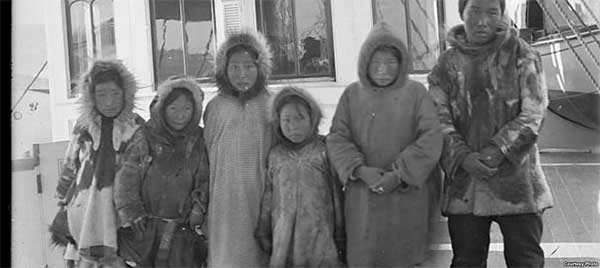
WASHINGTON — For thousands of years, the lives of the Yup’ik people of Alaska centered around the “qasgiq,” a communal house where men lived and worked, where community celebrations were held, and most importantly, where leaders and elders passed on knowledge, skills and life lessons to Yup’ik youth.
“Our ancestors and grandfathers were like psychologists,” said Billy Charles, a fisherman and former mayor of the southwestern town of Emmonak, one of the last settlements along the Yukon River before it empties into the Bering Sea. “They had a system of early childhood development in place, and with every teaching, they’d say, ‘It may not apply to you now, but later on in life, when you meet the challenge, you’ll know what to do.’”
Today, Charles is a researcher at the University of Alaska Fairbanks’ Center for Alaska Native Health Research (CANHR), working to prevent health disparities, particularly substance abuse and suicide, in indigenous communities.

Statistics demonstrate that Alaska Native (AN) youth are at greater risk for drug and alcohol abuse than any other population group in the state. In 2015, more children died from suicide than any other cause.
The reasons are rooted in the historic trauma of colonization — first by Russia in the 18th century, then by the U.S. government after it purchased Alaska from Russia in 1867. As with Native-American children in the lower 48 states, the government removed AN children from their families and placed them in missionary and boarding schools. There, children were forced to give up their language, culture and religious practices.
Today, ANs face an array of stressors: poverty, substandard housing, underemployment, alcohol and substance abuse, violence and mental illness. Geography is also a factor, said Evon Peter, a Neetsaii Gwich’in and Koyukon Native from Arctic Village in northeastern Alaska who is currently vice chancellor for rural, community and Native education at UAF.
“Most of our villages are not accessible by road, so they are extremely remote,” Peter said. “For me to travel from Fairbanks to some of our villages, it’s two days of travel and at least three different plane rides, sometimes costing as much as $2,000. So, there are substantial challenges and costs just to get work or have access to medical or behavioral health care.”
Climate change poses additional stressors on communities, said Stacy Rasmus, CANHR’s interim director.

“Alaska Native people are still very subsistence-based, very dependent on land-based food,” she said. “Whaling communities are finding it increasingly treacherous to navigate the ice, and entire villages are having to move because they are eroding into the ocean.”
But not all Native Alaskans are vulnerable to addiction or suicide, she stressed. Previous research has shown that Natives who are more connected to their traditional culture and language are less likely to take their own lives.
Rasmus and Charles have developed a cultural-based training and teaching manual called the Qungasvik, the Yup’ik word for “toolbox,” named after the carved wooden boxes Yup’ik men once used to store tools and tobacco and designed to help youth build resiliency.[xyz-ihs snippet=”adsense-body-ad”]The manual, available online, contains 36 activities based on traditional Yup’ik practices. One of them involves recreating the qasdig to provide youth an opportunity to connect with elders, learn about their heritage and history, develop life skills and participate in community life.
“Our elders instruct us that just as the musk ox surround their young to protect them from harm, we must gather together, form a circle and link hands around our youth,” said the narrator in a video produced as part of the Qungasvik. “The point is to communicate to children that they are appreciated, valuable members of the community and have much to live for.”

This week, tribal organizations and mental health practitioners from across Alaska are meeting with UAF researchers for the first in what is hoped to be an annual event: The Statewide Gathering to Celebrate and Support Community Strengths, hosted by UAF’s Alaska Native Collaborative Hub for Research on Resilience (ANCHRR).
The event was expected to draw more than 100 people from across Alaska and provide a venue for sharing success stories and collaborating on how best to promote well-being in participants’ respective communities.
The ANCHRR hub was established in 2017 with a $4.25 million grant from the National Institute of Mental Health to help find a fresh approach to suicide, focusing on community strength and resilience.
Source: VOA








